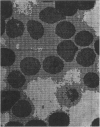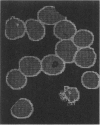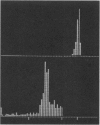Abstract
This paper considers the feasibility of automatic screening procedures for detecting malaria parasites in blood smears prepared in the field. A simple programme for pattern recognition by computer has been developed for thin blood films that identifies parasites as densely stained particles within an erythrocyte. The parasites are detected correctly, but platelets falling accidentally within the outline of an erythrocyte and perhaps reticulocytes may be wrongly classified as parasites. The results indicate that automated detection of parasites is technically feasible but that the technique needs to be refined to reduce the incidence of false positives. A substantial increase in processing speed is required if the automatic procedure is to be economically feasible in screening programmes. The complexity of the equipment and the need for well prepared blood smears point to a possible use of the technique in laboratory checks but not under usual field conditions.
Full text
PDF







Images in this article
Selected References
These references are in PubMed. This may not be the complete list of references from this article.
- Dowling M. A., Shute G. T. A comparative study of thick and thin blood films in the diagnosis of scanty malaria parasitaemia. Bull World Health Organ. 1966;34(2):249–267. [PMC free article] [PubMed] [Google Scholar]
- Young I. T. The classification of white blood cells. IEEE Trans Biomed Eng. 1972 Jul;19(4):291–298. doi: 10.1109/TBME.1972.324072. [DOI] [PubMed] [Google Scholar]









